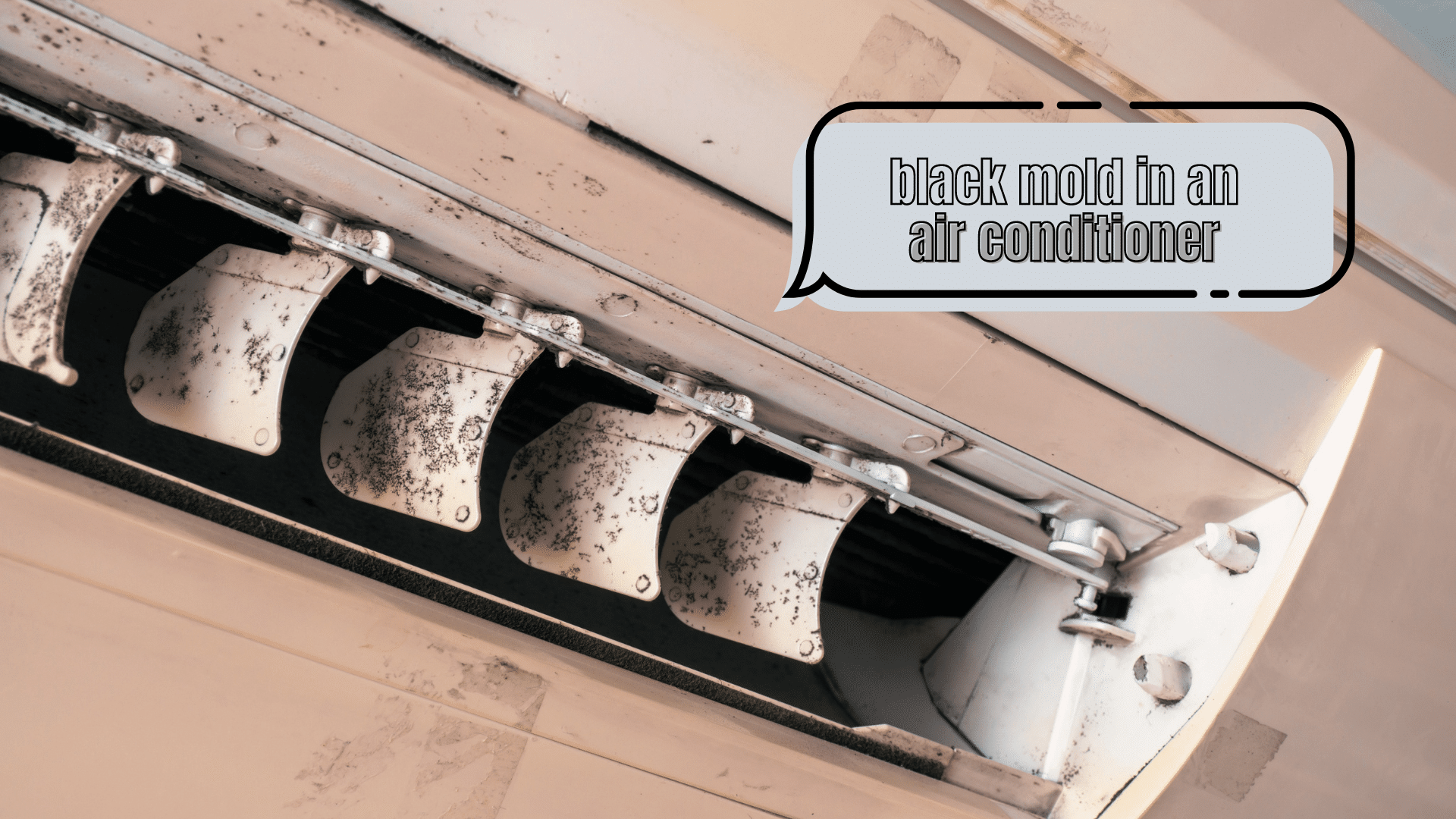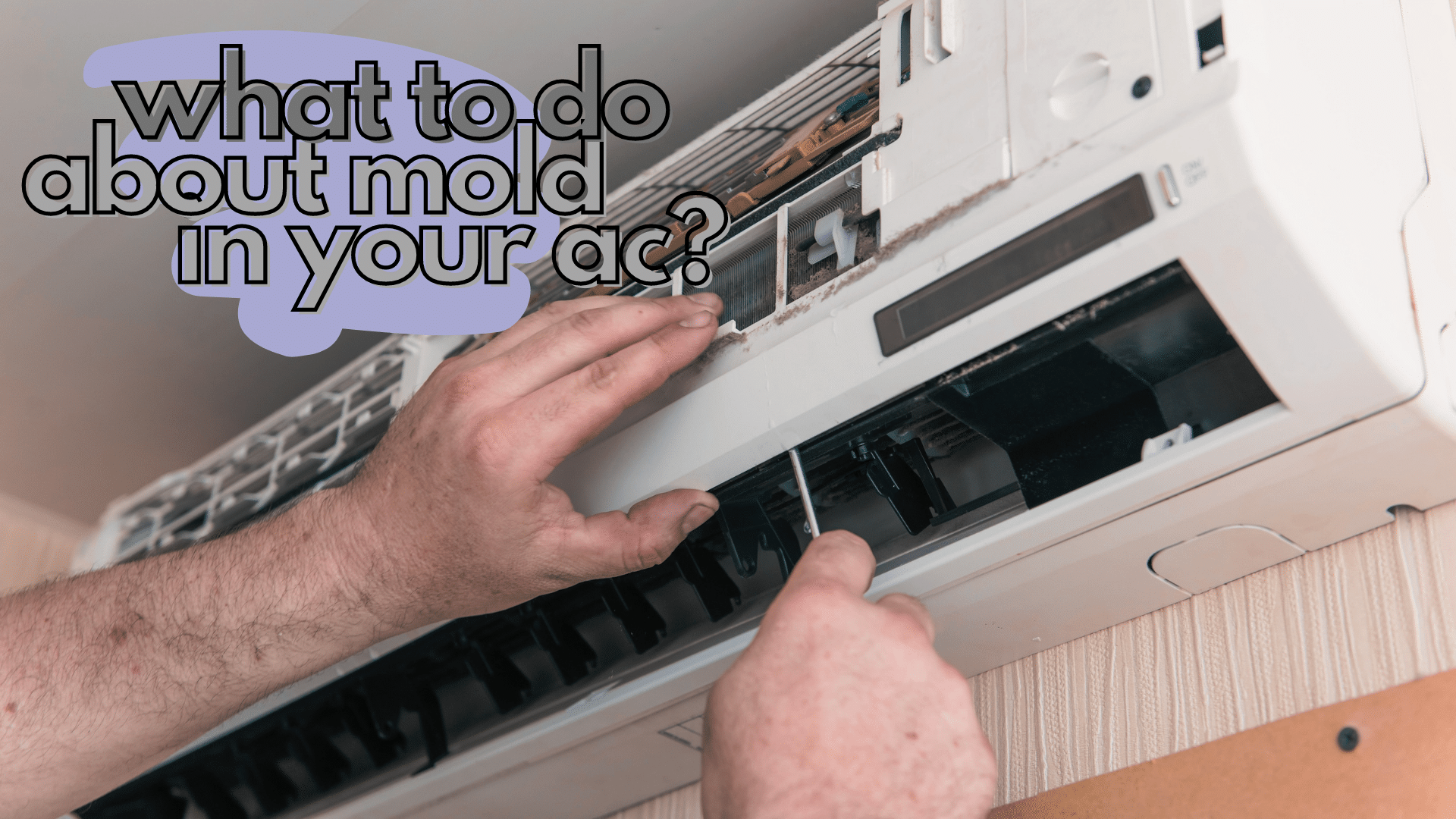If you notice a moldy smell in your home after powering the AC, there's a chance that this foul odor may come from the unit.
Word of caution: If there's a mold infestation in your AC unit, you may be at risk of a health hazard. Mold is a fungus that thrives in damp, dark places– and it may trigger severe allergic reactions and other health conditions.
Many homeowners often overlook and take for granted the convenience brought by air conditioner units, so they forget to commit to routine maintenance activities.
What is Black Mold?

The term "black mold" often comes up in discussions of AC-related problems. But, only a few homeowners genuinely understand what is.
Black mold (Stachybotrys chartarum) is a greenish-black colored mold that often thrives on materials like fiberboard, gypsum board, and paper. Anywhere there's water damage, moisture, and excessive humidity, basically. So if you notice any visible dirt and dust build-up in your AC units, it's crucial to act on the matter at once and commit to a regular maintenance schedule.
As per the Centers for Disease Control (CDC), "All molds should be treated the same with respect to potential health risks and removal."
5 Things to Do with Black Mold in Your AC
Here are a few things you can do if you're dealing with black mold growth in your air conditioning unit.

1. Confirm the Presence of Black Mold
For your reference, some common telling signs of black mold are as follows:
Although cleaning or removing the signs of mold growth can be done immediately, this doesn't guarantee the problem is solved for good. In some cases, you may need to clean the vents surrounding your entire home to take control of the problem and as such, eliminating black mold isn't as straightforward as removing the mold out of sight.
It's easy to test for possible mold activity inside your AC if you're aware of what to look for (or what kind of strange odor occurs).
2. Proceed to Clean Black Mold in Your AC Unit
Keep in mind that AC units vary in how they are assembled and designed. We encourage you to use the owner's manual as a reference so you can safely disassemble the unit without doing any damage. Gather the right tools and safety gear such as a dust mask, gloves, and goggles.
DIY Solution
Use a bleach solution (½ cup of bleach mixed with a gallon of hot water) and dip a scrubbing sponge in the mixture. Then, proceed to wipe the inside surfaces of your AC unit thoroughly. Ensure to remove all visible mold traces. The harsh bleach is enough to eliminate all residual spores.
Commercial Chemicals
For your convenience, you may also use commercial chemicals designed to kill mold. All you need to do is spray these "antimicrobials" on and wait for the mold colonies to die in a matter of minutes.
One popular pick is the Concrobium Mold Control, commonly available at most hardware stores. You may also consider Hydrogen peroxide-based mold killers, which are highly effective and give off a refreshing scent.
But, the most effective chemicals to remove mold would be Bleach-Based Cleaning Agents. It is known to work quickly and is often used by many professional mold remediation companies because it saves time, money, and labor.
Removing Mold Inside Air Vents
Suppose you suspect there's black mold growing on the AC coils. In that case, contact a local HVAC system professional to check the AC unit and confirm mold growth. If you want to remove mold traces inside the air vents, here's how you can do it:
Safety Measures
Before poking around your AC unit, make sure to wear appropriate safety gear. Always keep in mind that you are dealing with dangerous black mold, so it's best to avoid inhaling it in. You should also turn off the system to prevent microscopic mold spores from circulating the home.
3. Take Action in Preventing Future Mold Growth
Fortunately, you can take action to prevent future mold growth in your AC unit. For starters, make a habit out of checking your condensation levels (at the bottom of your AC unit) to ensure it isn't leaking. If you see some water pooling– take it as a sign to have the unit checked by a professional.
Another crucial thing is to ensure the AC unit is properly insulated. You can tell if the system is well-insulated if it doesn't let in too much warm air and moisture, reducing the likelihood of mold growth.
Lastly, opt to have the filters changed regularly according to the instructions by the manufacturer. This will significantly prevent the growth of mold inside the vents.
4. Consider Hiring Professional Services
Although mold is an increasingly common household problem today, you need to be extra cautious regarding black mold. This particular mold type is hazardous, given frequent exposure.
Black mold thrives in moist environments, such as inside AC units or walls damaged by water (due to leaks or high humidity levels). Its musty odor, in particular, is enough to trigger headaches and allergic reactions. It may even trigger specific respiratory issues, such as an asthma attack.
Since you're dealing with a severe problem at hand, it's recommended to consult a professional to mitigate the growth of these harmful, tiny spores. You wouldn't want to expose all the occupants of your home to dangerous health risks.
Mold removal professionals are experienced and adequately trained in remediating mold activity. They know how to contain the fungi properly, apply antimicrobial chemicals, and do correct mold prevention. Most pros use a sealer/encapsulant to protect the treated areas against water damage and future mold problems.
5. Be Mindful of the Health Impacts of Black Mold
Prolonged exposure to black mold can trigger severe allergic reactions, especially among children and the elderly. People with compromised immune functions or certain medical conditions such as asthma may also be at risk.
Here are other health impacts to keep in mind:
Although, these typical symptoms may be associated with other conditions such as the common cold or food poisoning. If you notice the symptoms persisting for days, you may want your HVAC unit inspected as soon as possible.
Frequently Asked Questions (FAQs)
What causes mold to grow in the AC unit?
Leaves and other debris may clog your air conditioner's drain line from the outside. When this happens, the water will back up and leak into the air conditioning unit, and it will grow mold on the interior surfaces.
How do I get rid of mold in my AC unit?
AC lines must be drained and cleaned out periodically to prevent mold growth. Improper draining is common on older systems that do not have condensation pumps. Ensure to check for leaks under the unit or any pipes leading outside of the house. A well-maintained AC unit may help eliminate musty odors and prevent mold or mildew from growing. It can also keep your energy bills low. Many available commercial products can help keep your AC unit clean inside and out. Just be sure to use it according to their manufacturers' instructions.
